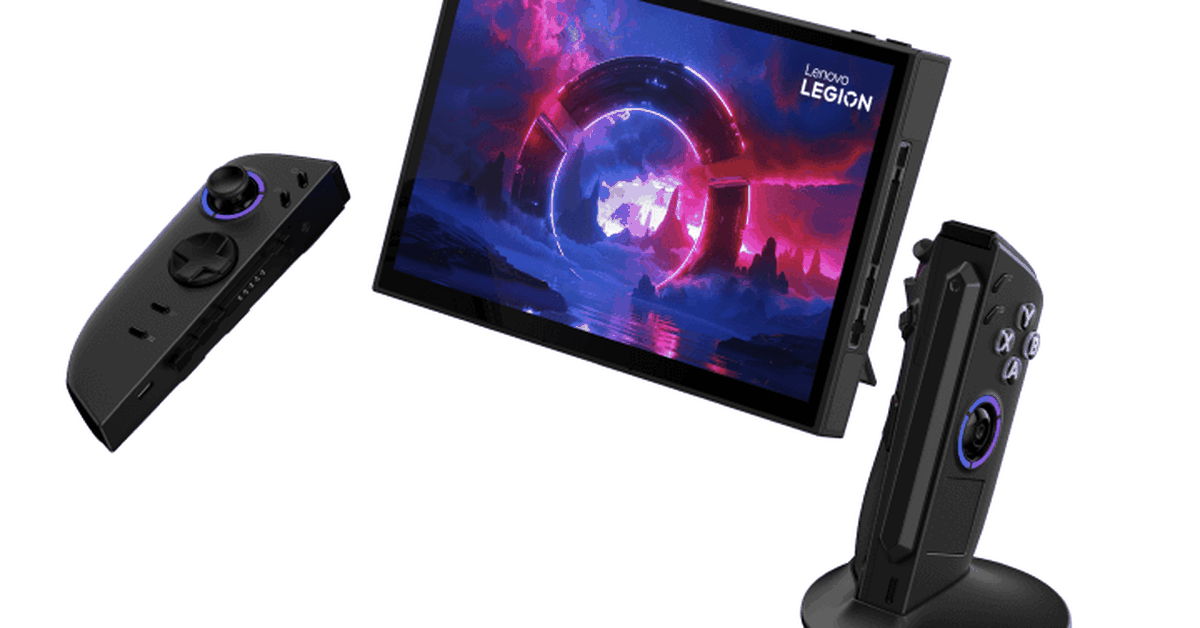Earlier today, Evan Blass dropped some exciting news regarding a new handheld gaming PC from Lenovo. The announcement came via leaked images and hints about an unannounced product featuring a Steam button, which suggests it could be the first third-party SteamOS handheld and potentially the first true competitor to the Steam Deck.
Unveiling the Lenovo Legion Go S
The Lenovo Legion Go S is set to launch as part of a lineup that includes a larger model, the Legion Go. Both devices are designed to cater to different user preferences while maintaining key features from their predecessors. The Legion Go S, in particular, will likely keep the detachable Joy-Con-like gamepads and kickstand that made the original Legion Go iconic.
Key Features of the Legion Go S
-
Detachable Joy-Con-Like Controllers: The Legion Go S will feature the same type of controllers as the original Legion Go, known for their sharp edges and additional mouse buttons. However, these controllers on the Legion Go S have been revised for smoother ergonomics.
-
OLED Display Option: A leaked image suggests that a variant of the Legion Go S may come with an 8.4-inch OLED panel instead of the IPS LCD screen found in the original model. This upgrade is expected to enhance color accuracy and response times compared to the standard model.
-
AMD Z2 Extreme Chip: The system is rumored to be powered by an AMD Z2 Extreme chip, which could offer improved performance over the Z1 chip used in previous Legion Go models.
-
Steam Button: While the leaked images do not show a Steam button, it remains possible that Lenovo is still exploring third-party SteamOS support alongside its collaboration with Microsoft on Windows-based devices.
The Smaller Model: Lenovo Legion Go S
The smaller model of the Legion Go series will focus more on SteamOS features. According to leaked filenames, this version will be explicitly "Powered by Steam," mirroring Valve’s new branding guidelines for devices running SteamOS. This move suggests a stronger emphasis on third-party support and competition against the Steam Deck.
Expectations for the Legion Go S
-
Performance: With an AMD Z2 Extreme chip, the Legion Go S is expected to offer enhanced performance compared to its predecessor.
-
Battery Life: While specific details about battery life have not been revealed yet, users can look forward to longer续航 capabilities on a single charge.
-
Ports and Connectivity: The system is expected to feature multiple USB ports for connectivity, including HDMI, DisplayPort, and USB-C, making it more versatile for various gaming scenarios.
Market Positioning
Lenovo’s decision to release both the Legion Go S and the larger Legion Go indicates a strategic move to cater to a broader audience. While the Legion Go is likely aimed at premium gaming enthusiasts seeking top-tier performance, the Legion Go S will appeal to consumers looking for a more accessible option with SteamOS features.
Community Feedback
In my review of the original Legion Go, I found the detachable controllers to be awkward due to their sharp edges and excessive number of mouse buttons. However, the Legion Go S’s redesigned controllers are expected to offer a more comfortable grip.
The lack of a Steam button in the leaked images has led some enthusiasts to question whether Lenovo is still committed to supporting third-party SteamOS devices alongside its Windows-based lineup. However, the presence of "Powered by Steam" in filenames suggests that this may be on the cards for the smaller model.
Pricing and Availability
While official pricing details have not been released yet, industry analysts predict that the Legion Go S will retail at a competitive price point given its enhanced features and premium design. Availability is expected to be late 2023 or early 2024.
Conclusion
The Lenovo Legion Go S represents a significant step forward in portable gaming technology. With its enhanced features, improved performance, and focus on SteamOS compatibility, it positions Lenovo as a strong contender in the competitive market of third-party handheld gaming devices. Whether this device will live up to expectations remains to be seen, but one thing is certain: it is shaping up to be a standout performer in the niche segment.
